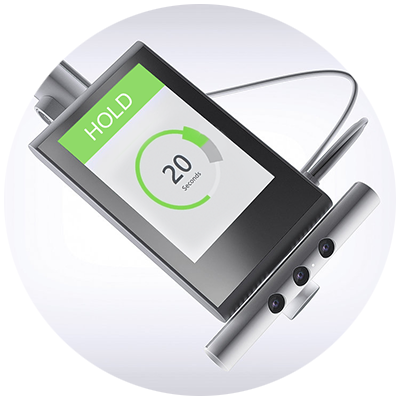Publications
Current Clinical Trials
-

LARK
Liver Ablative Radiotherapy Utilising Kilovoltage Intrafraction Monitoring (KIM) Improving new radiation therapy techniques for treating liver cancer. The LARK trial looks at treatment outcomes and treatment efficiency when incorporating our KIM technology with SABR, a new and effective radiation therapy technique that is becoming widely used. KIM technology provides the radiation therapist with real-time information […]
-

Nano-X
Measuring the patient’s experience of horizontal rotation. Nano-X is a new radiotherapy machine designed and built in Sydney, consisting of a patient rotation system together with a radiotherapy system. Nano-X proposes rotating the patient rather than rotating the enormous weight of the radiation therapy gantry. The NanoX is designed to be a low-cost radiotherapy system […]
-

Accurate Treatment for Lung Tumours
AVIATOR: Audio-Visual Investigation Advancing Thoracic Radiotherapy. Lungs tumours are difficult to treat with a static radiation beam because they’re in constant motion as the patient breathes. We’re trialing technology developed by our researchers that uses real-time information about the patient’s breath to indicate the tumour location. The technology monitors the motion of the chest rising and falling, […]
Clinical Trials Opening Soon
-
SMART
We have developed a mask-free system to remove the need for a thermoplastic immobilisation mask for patients being treated with radiotherapy for Head and Neck Cancer. This trial will look at the technical feasibility of our surface monitoring technology, as well as patient acceptance of the mask-free system. Our surface monitoring technology has been specifically […]
-
Nano-X Image Guidance
In this trial, we will use the Nano-X patient rotation system with the radiotherapy system, to rotate patients whilst imaging them. Project status: Opening soon.Study size: 30 patientsSites: Prince of Wales HospitalContact: Paul Liu [email protected]
-
MAGIK
This trial will use implanted markers to determine the feasibility of Markerless Image Guidance using Intrafraction Kilovoltage X-ray Imaging. It is a Phase I Interventional Study of Lung Cancer Radiotherapy Project status: Opening soon.Study size: 30 patientsSites: The Alfred HospitalContact: Marco Mueller [email protected]